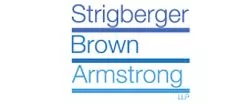The Ontario Court of Appeal recently weighed in on the Occupiers' Liability Act and the appropriate evidence admissible on a motion for summary judgment motion. In Drummond v. The Cadillac Fairview Corporation Limited, the Plaintiff attended Fairview Mall with his family. While there, he was injured after he tripped over a skateboard that belonged to a young boy. The Defendant brought a motion for summary judgment to dismiss the action. Although the Plaintiff did not bring a cross-motion, the Motion Judge granted judgment in favour of the Plaintiff.
The Defendant filed an appeal on three grounds – (1) the judgment was the product of an unfair process; (2) the Motion Judge admitted inappropriate hearsay evidence; and, (3) the Defendant's summary judgment motion should have been granted. Fairview was successful on all three grounds.
First, the Court of Appeal found that the Motion Judge's decision was not a "fair and just determination." The Court of Appeal noted that the Plaintiff did not bring a cross-motion for judgment and argued in his factum that a trial was required to determine liability. Specifically, one of the reasons advanced in opposing the motion was that the case would be more fairly and justly determined at trial because further evidence from additional witnesses was needed. The Court of Appeal was also critical that contributory negligence, which was raised by the Defendant, was not considered by the Motion Judge. Finally, the Judge failed to put the Defendant on notice and in doing so, failed to afford the Defendant an opportunity to address litigation risk. The Court of Appeal concluded that the lack of procedural fairness on the motion was a sufficient basis to allow the appeal.
Second, the Court of Appeal found that the Motion Judge erred in admitting hearsay evidence for the truth of its contents. Specifically, the Court of Appeal accepted the Defendant's submission that the Judge's finding was grounded on his erroneous admission of hearsay evidence on key, contested issues. This error constituted an additional reason to set aside the Judgment.
Finally, the Court found that Fairview was entitled to summary judgment. The central issue was whether the Defendant breached its duty to take reasonable care for patrons visiting the mall. Once the inadmissible hearsay evidence was removed from the negligence analysis, the remaining material evidence was all from the Defendant. This evidence established that: (1) Fairview had in place reasonable policies to ensure the safety of those entering the premises; (2) Fairview implemented policies in a routine and reasonable manner on the day of the incident through the patrols by the security guards; and, (3) Fairview had no reason to foresee that the young skateboard owner's conduct might pose a risk to the Plaintiff or any other patrons.
Unsurprisingly, the Court of Appeal decided that an occupier was not responsible for the actions of a guest on a property if the occupier put in place sufficient means in an attempt to decrease risk. Although there are always risks that are foreseeable, which ought to be addressed by the owner or occupier of a premises, there are other risks that are created by the actions of visitors that the occupier simply cannot foresee and cannot prevent.
See Drummond v. Cadillac Fairview Corporation Limited, 2019 ONCA 447 (CanLII)
The content of this article is intended to provide a general guide to the subject matter. Specialist advice should be sought about your specific circumstances.

